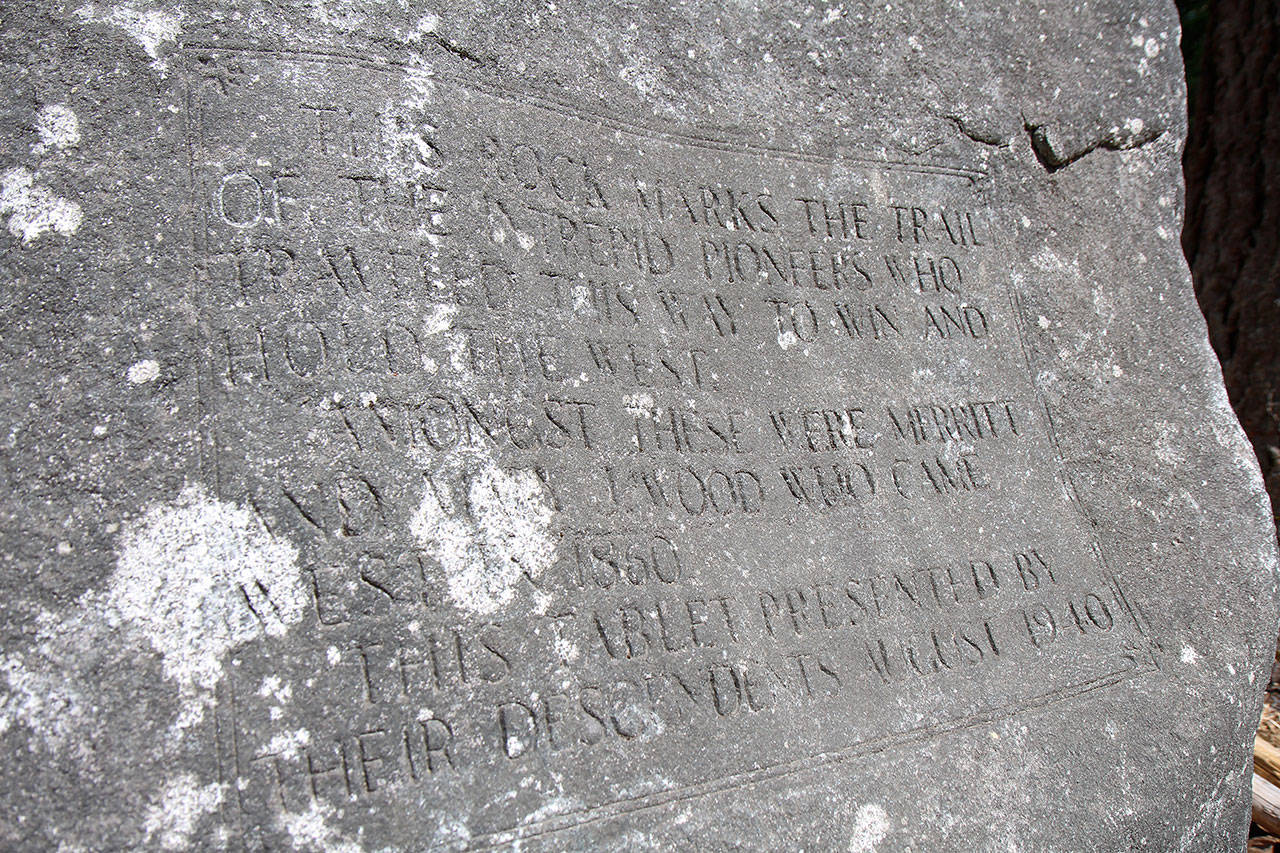This story begins about 10,000 years ago.
That’s likely when Pioneer Rock was deposited by melting glaciers near McCleary at the end of the most recent ice age.
Today, Bob Barnes and Dave Pearsall would like to see it brought to Grays Harbor County from its current home at the Boy Scouts of America’s Camp Thunderbird on Summit Lake in Thurston County. They are working with the Washington State Department of Transportation, the commissions of both Grays Harbor and Thurston counties, the Boy Scouts of America and others to move the stone. They could use some help.
They would like the rock to be moved to the WSDOT rest area east of Elma, where they believe it will be appreciated by the greatest number of people.
“It’s a good location because it’s on the same (wagon) trail alignment,” Barnes said, “and it would get a lot of visibility. It’s one of the most heavily used rest areas in the state.”
The scouts understand that their time watching over Pioneer Rock might be coming to a close.
“We’ve been happy to be a caretaker for the rock. We’re hopeful they can put it in a place of honor where it belongs,” Ralph Voelker, scout executive for BSA, said. “We’re excited for them to find a new home for it.”
Barnes and Pearsall would like to see an interpretive marker placed next to the stone at the rest area.
They will be talking with historic commissions from both counties. They plan to reach out to tribes that might be interested, the WSDOT regional administrator and hope to get the stone moved.
HISTORY
The stone is said to have been a marker for European settlers in the late 1800s. An article in The Vidette states the rock was the half way point on the wagon trail from Olympia to Elma.
In the 1928, the Daughters of the American Revolution proposed moving the stone to Westport to mark the site of old Fort Chehalis, according to Vidette reports. But local resistance put an end to that idea.
In the 1930s, the agency that is now the state Department of Transportation gave a stonemason permission to break it up to make headstones. Holes were started to be dug into the boulder when Chapin Collins, editor of The Vidette at the time — with the help of Vidette co-founder J.E. Calder, lawyer Frank Groundwater of Elma and others — stopped the destruction of the stone by getting a reprieve from then Gov. Clarence Martin.
In 1940, the following inscription was hewed into the boulder’s face:
“This rock marks the trail of the intrepid pioneers who traveled this way to win and hold the West.
“Amongst these were Merritt and Mary J. Wood who came west in 1860.
“This tablet presented by their descendents, August 1940.”
Collins would write in 1971 that he “talked to the head man of the tombstone firm, and he told me something about the geologic history of Pioneer Rock.
“It’s a very fine granite, very even in texture, ideal for carving. No such granite, he told me is found in this state, but this particular area has quite a number of these granite boulders, large and small, scattered over a wide area.
“The nearest source, he said, is in northern British Columbia. Thus Pioneer Rock was brought here — really in Thurston county — in the last Ice Age.”
In 1990, the about 29-ton slab of British Columbia granite was in the way of State Route 8. It was moved a short distance east to Camp Thunderbird, which belongs to the Boy Scouts of America.
If you would like to help or learn more about the rock and the project to move it, you can call Bob Barnes 360-915-4599 or send him an email to Dave Pearsall at davepioneerrock@gmail.com.
To reach Michael Lang, editor for The Vidette, send an email to mlang@thevidette.com or call 360-537-3936.


